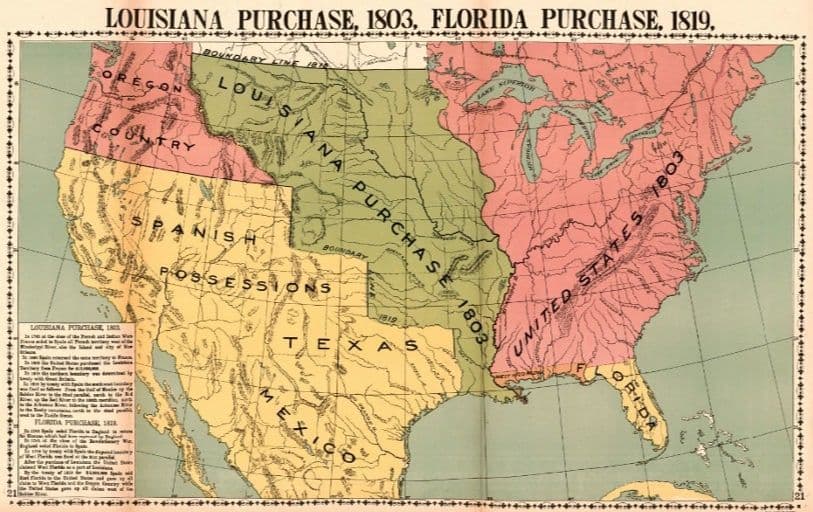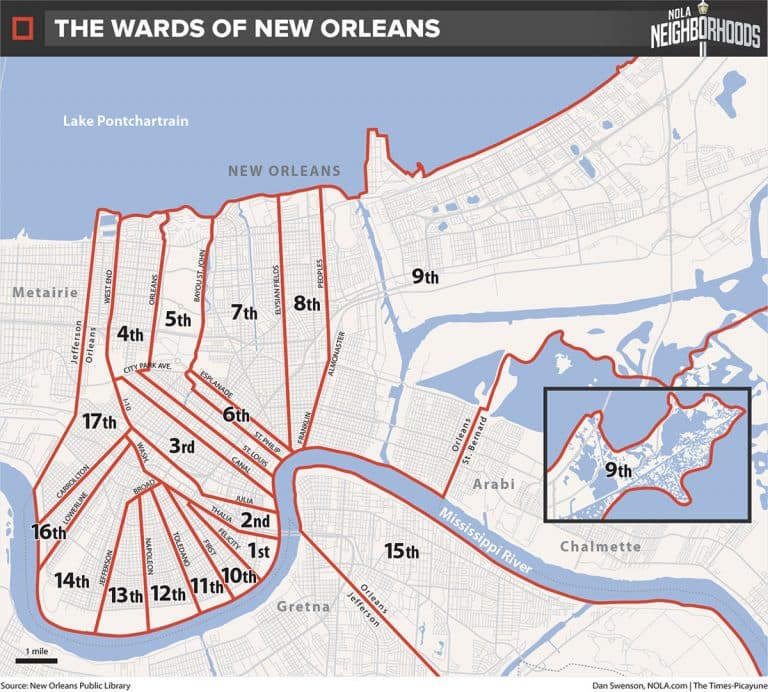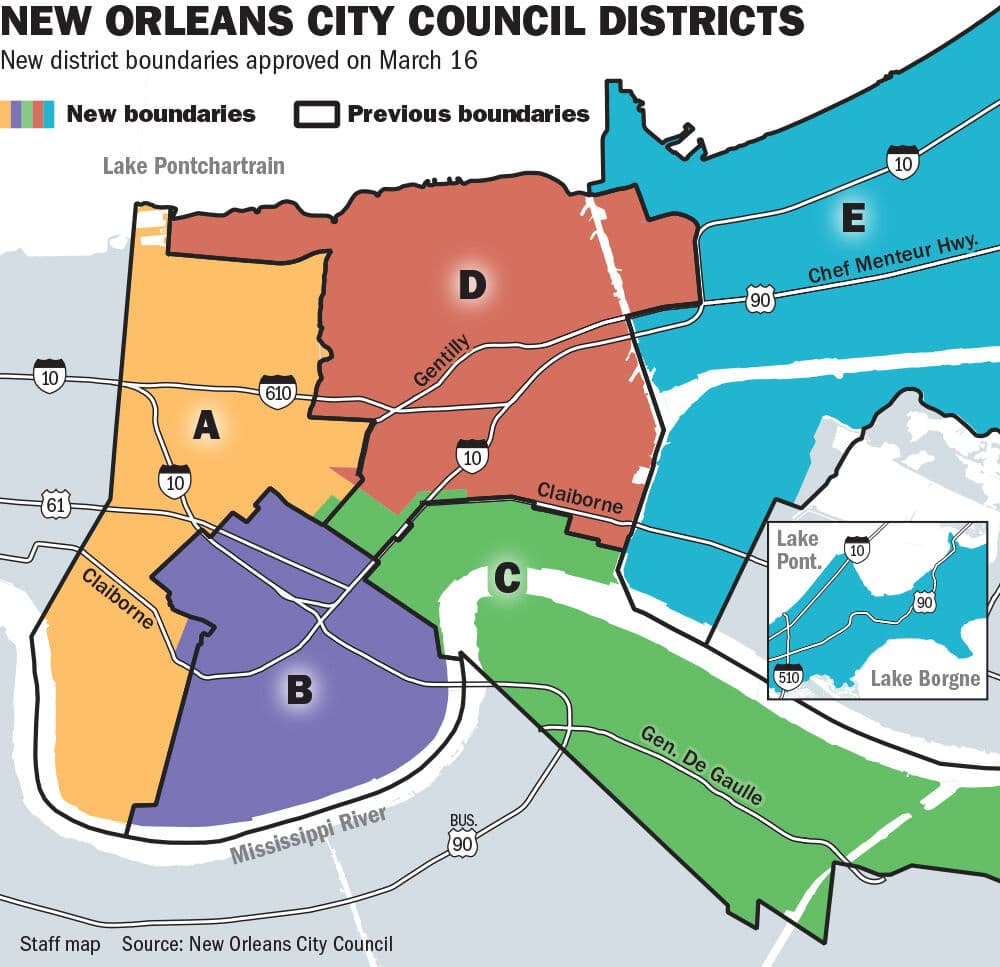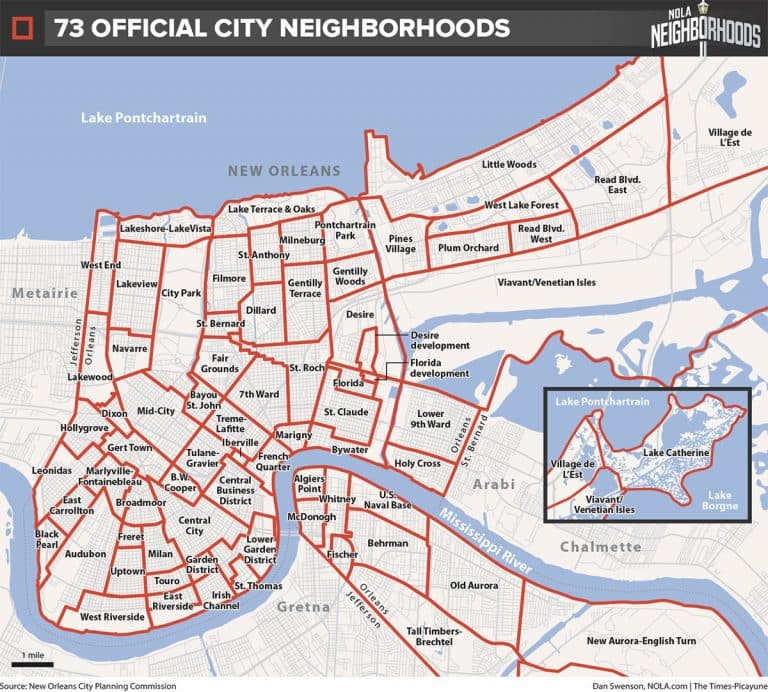Essential New Orleans: A Visitor's Guide
New Orleans is a city bursting with life – from its distinctive cuisine to its legendary music; it's got a 'lil something for everyone.
Known for its historic French Quarter, Mardi Gras festivities, and soulful jazz, the city offers old-world charm and unforgettable experiences that will resonate long after you visit.
So, as they say in New Orleans, laissez le bon temps rouler – or, let the good times roll.
This guide aims to help you navigate the distinct character of New Orleans by providing essential information that might otherwise be overlooked. As a longtime resident, I'm sharing only information (in an abbreviated format) that I think would be helpful for newcomers.
Quick History
1763: Ceded to Spain
1800: Returned to France
1803: Sold to the United States for $15 million
Let's start with an abbreviated history of this most beautiful of cities.
The Founding of New Orleans
New Orleans was established by the French in 1718 (by Jean Baptiste Le Moyne de Bienville) and remained under French control until 1763.
When New Orleans was founded, Louis XV, who was only eight years old at the time, was the king of France. This meant that actual governance was in the hands of his regent, Philippe II, Duke of Orléans.
The Duke was a prominent member of the House of Bourbon, a major royal family that significantly shaped French and European history.
In recognition of the Duke's influence and to honor him, New Orleans was named after him. This connection also extends to the famous Bourbon Street, which echoes the legacy of the Bourbon family in the city's French colonial heritage.

(source: Wikimedia Commons)
French Loss of Louisiana
In 1763, after France was defeated by Great Britain and its allies in the Seven Years' War (1756-1763), a significant part of which included the North American theater known as the French and Indian War, France had to give up several territories.
As part of the peace negotiations, France ceded New Orleans and the rest of Louisiana to Spain.
This transfer was a strategic move: since Spain had entered the war as a late ally of France and lost its own territory of Florida to Britain, France compensated Spain by giving them Louisiana. This helped France maintain its alliance with Spain against Britain.
Spain Returns Louisiana to France
The city stayed under Spanish rule until 1800, when Spain secretly agreed to return New Orleans to France through the Treaty of San Ildefonso, hoping to gain favor with the French government. This transfer was kept a secret until it was publicly disclosed in 1802.
This period of Spanish rule, combined with its foundational French heritage, is why New Orleans boasts a rich blend of both Spanish and French influences, evident in its architecture, cuisine, and cultural traditions.
However, France's control over New Orleans was short-lived.
France Sells Louisiana to the United States
In 1803, Napoleon Bonaparte, then the leader of France, sold Louisiana for $15 million ($415 million in 2024) – which included New Orleans – to the United States in what is known as the Louisiana Purchase.

(source: Library of Congress/ McConnel Map Co.; hosted @ kajabi-cdn.com)
How Governance Impacted Culture in New Orleans
New Orleans was once a city divided into 17 political partitions, or wards, each of which was further divided into precincts. Each ward elected an alderman who represented the interests of that specific area on the city council.
I mention these seemingly mundane facts because these old administrative divisions continue to play a role in the city's modern's character.
How?
Well, many residents (still, today) identify by ward, reflecting a deep connection to their specific area of the city. Each ward has its own unique character and cultural significance, embodying a strong sense of community and local pride.
If you spend time in the city, you'll almost certainly hear this word "ward" – so, now you'll know what it means and how it's connected to New Orleans.

(sources: New Orleans Public Library and Dan Swenson, nola.com, The Times Picayune; hosted @ sbc.edu)
New Orleans transitioned from wards to districts in the early-20th century – to be specific, 1912 was the last election based on wards.
This shift provided better representation by dividing the city into more equally populated sections.
Today, New Orleans is governed by a mayor and a city council comprising seven members.
Five of these council members represent specific council districts, while two are elected at large.
The districts are designated as follows:
| district |
|---|
| District A: Claiborne |
| District B: Uptown |
| District C: West Bank |
| District D: Gentilly |
| District E: Chef Menteur |

(source: New Orleans City Council; hosted @ townnews.com)
Neighborhoods of New Orleans

(source: New Orleans City Planning Commission and Dan Swenson, nola.com, The Times Picayune; hosted @ sbc.edu)
Most Popular Neighborhoods
| Neighborhood | Description | Origin |
|---|---|---|
| French Quarter Ward 1; District C | The historic heart of New Orleans, known for its vibrant nightlife and colonial architecture. | Named for the French who originally settled and developed it. |
| Garden District Ward 2; District B | Famous for its well-preserved antebellum mansions and lush gardens, established in the 1830s. | Named for the luxurious gardens found in its large estates. |
| Marigny Ward 3; District C | Known for its bohemian atmosphere and live music scenes, laid out in the early 19th century. | Named after Bernard Marigny, a notable local developer. |
| Treme Ward 4; District C | One of the oldest African American neighborhoods in the U.S., famous for its musical heritage. | Named after Claude Tremé, who owned the land in the 18th century. |
| Bywater Ward 7; District C | A vibrant arts community along the Mississippi River, known for its quirky vibe. | Named for its location by the water of the Mississippi River. |
| Algiers Ward 15; District C | Known for its historic sites and ferry service across the Mississippi, established in 1719. | Named after Algiers, a city on the opposite side of the Mediterranean from France. |
| Uptown Wards: 10, 11, 13; District A | Characterized by historic homes, trendy shops, and St. Charles Avenue, developed in the 1800s. | Named for its location 'up' the Mississippi River from the older parts of the city. |
| Mid-City Ward 4; District B | Known for its diverse communities and as the site of the New Orleans Jazz & Heritage Festival. | Named for its central location in the heart of New Orleans. |
| Lower Ninth Ward Ward 9; District E | Heavily impacted by Hurricane Katrina, known for its resilience and community spirit. | Named for its position as the downriver end of the Ninth Ward. |
| CBD/Downtown Wards: 1, 2; District B | The business hub of the city, featuring high-rises and professional services. | Short for Central Business District, describing its function. |
| Arts District Wards: 1, 2; District B | Known for contemporary art galleries and vibrant arts scene, revitalized in the late 20th century. | Named for its concentration of arts institutions and galleries. |
| Carrollton Ward 11; District A | Originally a separate town, known for its oak-lined streets and laid-back atmosphere. | Named after William Carroll, who was governor of Louisiana. |
| Lakeview Ward 5; District A | Residential area rebuilt after Hurricane Katrina, known for its proximity to Lake Pontchartrain. | Named for its views and access to Lake Pontchartrain. |
| Gentilly Wards: 3, 7; District D | A diverse residential neighborhood, known for its jazz clubs and middle-class character. | Possibly from the French 'gentil,' meaning gentle or noble, reflecting its laid-back character. |
| New Orleans East Wards: 7, 8, 9; District E | A large area known for suburban-style living and newer developments, developed in the 1960s. | Named for its geographic location in the eastern part of the city. |
| Upper Ninth Ward Ward 9; District C | Known for its cultural diversity and historical industrial activities. | Named for its position as the upriver portion of the Ninth Ward. |
| Esplanade Ridge Ward 4; District D | Known for historic homes along Esplanade Avenue, with a rich cultural and architectural history. | Named after Esplanade Avenue, which runs through it. |
| Lower Garden District Ward 2; District B | Similar charm to the Garden District but with a more eclectic and accessible vibe. | Named for being geographically lower than the Garden District. |
| Irish Channel Wards: 10, 11; District B | Historically Irish immigrant community, now known for its small homes and lively pubs. | Named for the large number of Irish immigrants who settled there in the 19th century. |
| Warehouse District Wards: 1, 2; District B | Renowned for its converted warehouses now housing restaurants, shops, and lofts. | Named for its original use as an industrial and warehouse area. |
| Broadmoor Ward 4; District B | Known for its raised bungalow homes and community-led revitalization post-Katrina. | Possibly named for its wide, 'broad' avenues. |
| Lake Terrace and Lake Oaks Ward 5; District D | Known for upscale homes and proximity to universities and cultural institutions. | Named for its location near Lake Pontchartrain and surrounded by oak trees. |
| Bayou St. John Ward 4; District A | Known for its namesake waterway and historic, scenic beauty. | Named after the bayou that runs through it, which was named for Saint John. |
| Lower Garden District Ward 2; District B | Similar charm to the Garden District but with a more eclectic and accessible vibe. | Named for being geographically lower than the Garden District. |
New Orleans Accents
Interesting Facts About New Orleans
Originated in New Orleans
| Jazz Music | Birthplace of jazz, a genre that started in the late 19th and early 20th centuries from the city's diverse musical culture. |
| Sazerac | Often considered the oldest known American cocktail, originated in New Orleans in the 1800s. |
Iconic Food
| Gumbo | A famous dish that combines French, Spanish, West African, and Native American influences. |
| Po-boy | A traditional sandwich typically filled with roast beef or fried seafood. |
Cultural Significance
| Mardi Gras | Hosts one of the world's most famous Mardi Gras celebrations with elaborate parades and masquerade balls. |
Architectural Style
| French Quarter | Known for its historic buildings with balconies adorned with intricate ironwork, and streets lined with bars and restaurants, showcasing the city's French and Spanish heritage. |
Historical Figures Linked to New Orleans
| Louis Armstrong | Legendary jazz musician known for his profound impact on the jazz genre. |
| Anne Rice | Author best known for her series of novels, 'The Vampire Chronicles'. |
| Jean Lafitte | Famously known for his alliance with General Andrew Jackson during the Battle of New Orleans in 1815, where his pirate crew was instrumental in securing a crucial victory against the British in the War of 1812. |
Celebrities Born in the Greater New Orleans Region
| Lil Wayne | Influential rapper, singer, and songwriter, known for his successful music career. |
| Ellen DeGeneres | Comedian, television host, actress, and writer who gained fame with her sitcom 'Ellen' and later the talk show 'The Ellen DeGeneres Show'. |
| Harry Connick Jr. | Singer, pianist, and actor, well known for his jazz and pop performances. |
| Peyton Manning | Renowned NFL quarterback who spent the majority of his career with the Indianapolis Colts and Denver Broncos. |
| Tyler Perry | Filmmaker, playwright, and actor known for creating and portraying the character Madea. |
| Branford Marsalis | Saxophonist, composer, and bandleader, part of the Marsalis family of jazz musicians. |
| Trombone Shorty | Musician and producer known for his work in jazz, funk, and rap music. |
When to Go to New Orleans
Popular City Events
| name | when | description |
|---|---|---|
Mardi Gras mardigrasneworleans.com | Late February to early March Feb, ℉ : 65/46Mar, ℉ : 72/53 | The city's famous Carnival season culminates on Fat Tuesday with parades, masquerade balls, and street parties. |
Tennessee Williams Literary Festival tennesseewilliams.net | Late March Mar, ℉ : 72/53 | Tennessee Williams, renowned for his play "A Streetcar Named Desire," considered New Orleans his "spiritual home" and used it as the backdrop for many of his works. The annual Tennessee Williams Literary Festival in New Orleans celebrates this deep connection by featuring readings, workshops, and the distinctive "Stella" shouting contest. |
French Quarter Festival frenchquarterfest.org | April Apr, ℉ : 78/60 | A large free outdoor event celebrating New Orleans' unique heritage and culture with music, food, and special events throughout the French Quarter. |
New Orleans Jazz & Heritage Festival (Jazz Fest) nojazzfest.com | Late April to early May Apr, ℉ : 78/60May, ℉ : 85/68 | Celebrates the indigenous music and culture of New Orleans and Louisiana. |
Bayou Boogaloo thebayouboogaloo.com | May May, ℉ : 85/68 | A community music festival on the banks of Bayou St. John, featuring local music, food vendors, and artisans. Since it's inception in 2006, the event draws approximately 35,000 people. |
New Orleans Wine & Food Experience nowfe.com | Late May May, ℉ : 85/68 | Showcases local food and international wines, featuring tastings, dinners, and competitions. |
Oyster Festival nolaoysterfest.org | Early June Jun, ℉ : 89/74 | Celebrates the local delicacy with contests, live music, and lots of oyster dishes. |
Creole Tomato Festival frenchmarket.org/creoletomatofest | Early June Jun, ℉ : 89/74 | Celebrates Louisiana's Creole tomato at the French Market with food, music, and activities. |
Essence Music Festival facebook.com/essencefest | Around July 4th weekend Jul, ℉ : 91/76 | Features major R&B, jazz, gospel, hip-hop, and blues acts, along with seminars on various topics. |
Running of the Bulls in New Orleans nolabulls.com | July Jul, ℉ : 91/76 | A local twist on Pamplona's event, featuring roller derby athletes as bulls. |
Satchmo SummerFest satchmosummerfest.org | Early August Aug, ℉ : 91/75 | Dedicated to the life, legacy, and music of Louis 'Satchmo' Armstrong. |
Southern Decadence southerndecadence.net | Labor Day weekend in September Sep, ℉ : 87/72 | Known as 'Gay Mardi Gras,' it features parades, street parties, and costume contests. |
New Orleans Film Festival neworleansfilmsociety.org/festival | Mid-October Oct, ℉ : 80/62 | Showcases a diverse range of films and has become a premier event in the independent film community. |
Voodoo Music + Arts Experience | Late October Oct, ℉ : 80/62 | A multi-day music and arts festival featuring national and international artists. |
Halloween in New Orleans | October Oct, ℉ : 80/62 | The city celebrates with haunted houses, costume balls, and parades, notably in the French Quarter. |
Celebration in the Oaks celebrationintheoaks.com | Late November to early January Nov, ℉ : 72/53Dec, ℉ : 64/46Jan, ℉ : 62/43 | A festive holiday lights display in City Park, featuring thousands of colorful lights and illuminated outdoor displays. |
Mardi Gras
Mardi Gras, or Fat Tuesday, is the climax of the Carnival season which starts on Epiphany (January 6th) and ends the day before Ash Wednesday. This period, deeply rooted in Christian traditions, involves festivities such as parades, masquerades, and balls, and ends with a day of indulgence in food and celebration before the solemn Lenten season of fasting and penance begins.
Originally a part of ancient Roman pagan rites, Mardi Gras was assimilated into the Christian calendar as a prelude to Lent, blending local pagan customs with Christian practices. The name "Mardi Gras" means "Fat Tuesday" in French, highlighting the tradition of eating rich, fatty foods before the Lenten fasting period.
The festival is most famously observed in New Orleans, where it was introduced by French colonizers in the late 17th century. Over the centuries, it has evolved into a grand event featuring street parties, elaborate floats, and masked balls. Mardi Gras in New Orleans is not only a major cultural festivity but also a significant tourist attraction, marked by vibrant parades organized by various "krewes," each adding unique themes and traditions to the celebration.
Today, while Mardi Gras has become a significant cultural event in various parts of the world, including Brazil and Italy, it retains its original blend of European medieval festivity and religious observance, symbolizing the end of winter and the forthcoming period of spiritual reflection leading up to Easter.
Most Popular Mardi Gras Krewes
| krewe | when | where | description |
|---|---|---|---|
| Rex | Mardi Gras Day | Uptown New Orleans | Founded in 1872, Rex is known as the 'King of Carnival' and is responsible for selecting the official Mardi Gras colors and the theme of the parade each year. |
| Zulu | Mardi Gras Day | Uptown to Central Business District | Established in 1909, Zulu is famous for its unique and highly sought-after coconut throws and is one of the most anticipated parades, known for its rich African American heritage. |
| Orpheus | Lundi Gras (Monday before Mardi Gras) | Uptown to the French Quarter | Founded by Harry Connick Jr. in 1993, Orpheus is known for its musical heritage and impressive floats like the Smokey Mary. |
| Bacchus | Sunday before Mardi Gras | Uptown New Orleans | Bacchus, started in 1968, revolutionized Carnival with its celebrity kings and large, animated super floats, making it a highlight of the season. |
| Endymion | Saturday before Mardi Gras | Mid-City | Founded in 1967, Endymion is one of the super krewes known for its spectacular floats and celebrity grand marshals, culminating in a massive Extravaganza in the Superdome. |
| Muses | Thursday before Mardi Gras | Uptown New Orleans | Started in 2000, Muses is an all-female krewe famous for their hand-decorated shoes and strong community involvement. |
Popular Restaurants in New Orleans
If you're short on time, or just want a popular, tried and true eatery, you can't go wrong with any of the ones appearing below.
| Restaurant | Address & Phone | What to Order |
|---|---|---|
| Café Du Monde | Beignets Café au lait Iced Coffee | |
| Jacques-Imo's | Crawfish Étouffée Grouper with Shrimp and Asparagus Buttered Parsley Cornbread Shrimp and Alligator Cheesecake Blackened Redfish with Maque Choux Crème Brûlée Garlic Butter Cornbread | |
| Verti Marte | Muffuletta Fried Shrimp Po-boy All That Jazz Sandwich Ernie's Power House Sandwich Spinach Surprise Bread Pudding | |
| Domilise's Po-Boy & Bar | Shrimp Po-boy Half & Half Seafood Sandwich Spiral Cut Fries Shrimp / Fresh Catfish Sandwich | |
| Emeril's | Chicken Tchoupitoulas Classic Tasting Menu Red Snapper Ceviche Skin-on Snapper Fillet Banana Cream Pie Vieux Carre Cocktail Amuse Bouches Seasonal Tasting Menu | |
| Antoine's Restaurant | Classic Benedict Blueberry Jubilee Blintz Oysters Rockefeller Charbroiled Oysters Soufflé Potatoes Antonio's Burger Shrimp & Grits Pompano Pontchartrain | |
| Parkway Bakery & Tavern | Fried Shrimp and Catfish Po-boy Surf and Turf Po-boy Chicken and Sausage Jambalaya James Brown Po-boy Shrimp Po-boy | |
| Elizabeth's Restaurant | Bloody Mary Praline Bacon French Toast Burrito Fried Chicken Livers with Pepper Jelly Eggs Elizabeth Fried Green Tomatoes with Remoulade Shrimp and Grits Gumbo Poached Egg Dishes Fried Callas | |
| Willie Mae's Scotch House | Fried Chicken Cornbread Muffins Red Beans and Rice Sweet Potato Fries Mac and Cheese Fried Okra Fried Catfish Fried Shrimp Platter | |
| Galatoire's | Pompano en Papillote Oysters Rockefeller Crabmeat Yvonne | |
| Commander's Palace | Turtle Soup Bread Pudding Soufflé Pecan Crusted Gulf Fish | |
| Brennan's Restaurant | Bananas Foster Turtle Soup Eggs Hussarde | |
| Gumbo Shop | Gumbo Z'Herbes | |
| Royal House Oyster Bar | Blackened Chicken Jambalaya | |
| Central Grocery and Deli | Muffuletta | |
| Killer Po-Boys | Ham and Cheese Po-boy Seared Gulf Shrimp Po-boy Thai BBQ Tofu Po-boy Pork Belly Po-boy | |
| Jack Dempsey's Restaurant | Seafood Platter for 2 Crab Balls Crawfish Pies | |
| Bennachin | Bennachin Black Eyed Peas with Tomato Stew and Coconut Rice Black Eyed Pea Fritters Jollof Rice Yassa Chicken | |
| Joe Gambino's Bakery | Doberge Cake King Cake | |
| Café Beignet | Fresh Handmade Beignets (3 Per Order) Pecan Pie Mimosa Cafe au Lait | |
| Leah's Pralines | Brittle Praline |